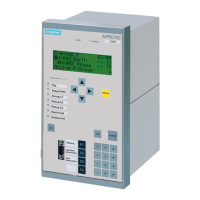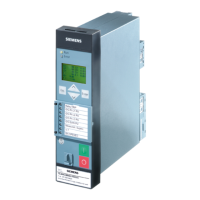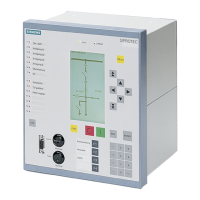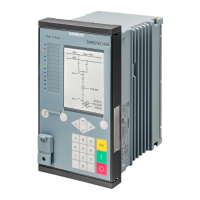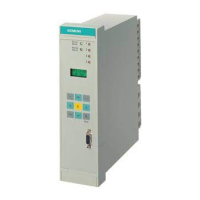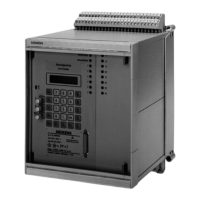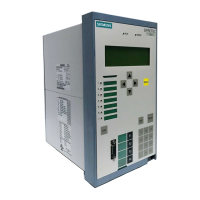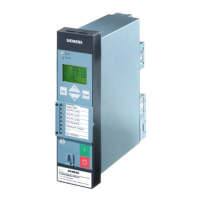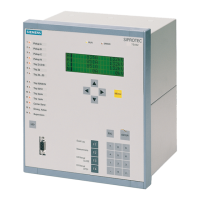2.2 Protection Data Interfaces and Protection Data Topology
57
7SD610 Manual
C53000-G1176-C145-4
F.optic direct, i.e. communication directly by fibre-optic cable with 512 kbit/s;
Com conv 64 kB , i.e. via communication converters with 64 kbit/s (G703.1 or X.21);
Com conv 128 kB, i.e. via communication converters with 128 kbit/s (X.21, copper
cable);
Com conv 512 kB, i.e. via communication converters 512 kbit/s (X.21) or communi-
cation converters for 2 Mbit/s (G703–E1/T1).
The possibilities may vary for the different device versions. The data must be identical
at both ends of a communication route.
The setting depends on the features of the communication media. As a general rule,
it can be stated that the higher the transmission rate the shorter the tripping time of the
differential protection system.
The devices measure and monitor the transmission times. Deviations are corrected,
as long as they are within the permissible range. These permissible ranges are set
under addresses 4505 and 4506 and can normally be left at their default values.
The maximum permissible transmission time at address 4505 PROT 1 T-DELAY is
preset to a value that does not exceed the usual delay of communication networks.
This parameter can only be altered in DIGSI at Additional Settings. If it is exceeded
during operation (e.g. because of switchover to a different transmission path), the in-
dication „PI1 TD alarm“ (No. 3239) will be issued. Increased transmission times
only have an impact on the tripping time of the differential protection system.
The maximum transmission time difference (outgoing telegram vs. return telegram)
can be altered at address 4506 PROT 1 UNSYM.. This parameter can only be altered
in DIGSI at Additional Settings. With a direct fibre-optic connection, this value should
be set to 0. For transmission via communication networks a higher value is needed.
The standard value is 100 µs (default setting). The permissible transmission time dif-
ference has a direct influence on the sensitivity of the differential protection.
If GPS synchronisation (ordering option) is used, this value is relevant only in case the
GPS signal is missing. As soon as the GPS synchronisation is restored, the transmis-
sion time differences are compensated again. As long as GPS synchronisation is
intact, transmission time differences do not affect the sensitivity of the differential pro-
tection.
Address 4511 PI1 SYNCMODE is only relevant if GPS synchronisation is used. It de-
termines the conditions for operation when the protection data communication has
been re-established (initially or after transmission failure).
• PI1 SYNCMODE = TEL or GPS means that the differential protection will become
active as soon as the protection communication has been established (data tele-
grams are received). Until the GPS synchronization is put into service with the con-
ventional method, the differential protection operates with increased self-restraint
determined by the maximum transmission time difference without GPS (address
4506 PROT 1 UNSYM.).
• PI1 SYNCMODE = TEL and GPS means that the differential protection is active,
after reception of proper protection data telegrams, first when GPS synchronization
has taken place or if the running time is signalled via an external operation (binary
input). If synchronization is established by the operator, the differential protection
operates with the configured value at address 4506 PROT 1 UNSYM. until the
transmission time differences are compensated by the GPS synchronization.
• PI1 SYNCMODE = GPS SYNC OFF means that no GPS synchronization takes place
for this protection data interface. This is meaningful if no transmission time differ-
ences are expected (e.g. for fibre-optic direct data link).
www . ElectricalPartManuals . com
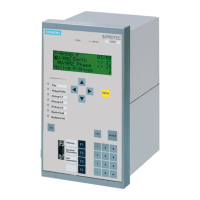
